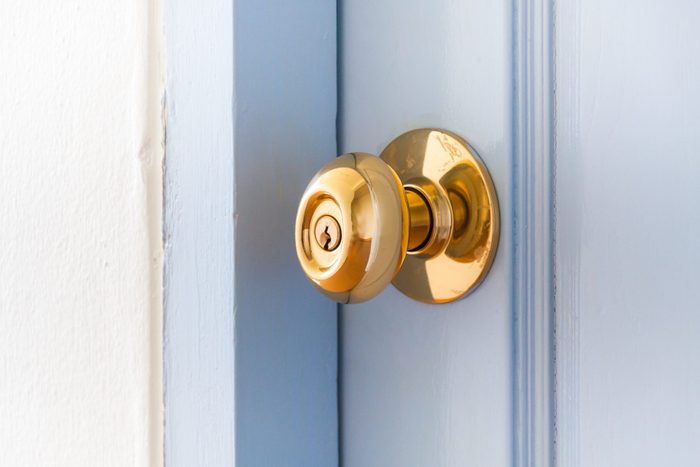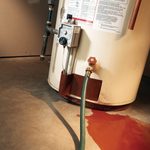Here’s Why So Many Homes Have Brass Doorknobs

These old-school fixtures are so much more than a pretty face.
Whenever you visit an older house, you may notice a few peculiar features. From mysteriously matching front doors to the razor slits in medicine cabinets, these old-fashioned features deliver rustic charm in spades. But did you know some of them still have modern-day benefits? Such is the case with brass doorknobs, whose beauty is only half of their appeal.
A Brief History of the Modern Doorknob
Though ceramic and china doorknobs were popular in France and England, the cast-metal doorknob as we think of it today was invented in the mid-19th century in America. Accounts vary—over 100 doorknob patents were filed between 1830 and 1873!—but the invention is largely credited to a 16-year-old Black inventor named Osbourne Dorsey in 1848.
The main body of these doorknobs was made of steel or iron, but to beautify them, manufacturers coated them in a thin layer of bronze or brass. Soon, brass—a durable, relatively inexpensive copper alloy—became the standard veneer.
Little did manufacturers know that scientists would later discover the alloy had anti-microbial and disinfectant properties.
Do Brass Doorknobs Disinfect Themselves?
To an extent, yes. Through a process known as the “oligodynamic effect,” copper and its alloys—like brass—self-disinfect over time. This is because the copper ions can bind to bacteria, viruses, and pathogens, and basically destroy many of those cells in as little as 15 minutes.
One 2015 study found that when medical components were made from copper alloys, an “83% reduction in bacteria was seen on [them] … compared to the surfaces made from standard materials.”
In contrast, stainless steel, one of the most commonly used materials in both clinical and domestic environments, can harbor numerous pathogens and other microorganisms that “evade cleaning regimens.” Yikes!
Do Brass Doorknobs Need to Be Cleaned?
It’s easy to see that brass doorknobs have their own special magic to impart upon your home. However, it’s important to note that brass alone is not a foolproof disinfectant. Brass doorknobs still need to be cleaned effectively to kill off any lingering bacteria.
How to Clean Brass Doorknobs
There are numerous ways to clean brass hardware, but the easiest methods use either Bar Keeper’s Friend or a lemon juice and baking soda mixture.
Equipment:
- Screwdriver
- Warm water
- Dish soap (optional)
- Bar Keeper’s Friend (BKF) or vinegar and baking soda
- Old toothbrush
- Soft, damp cloth
- Soft, dry cloth
Directions:
- First, carefully remove the doorknob using the screwdriver. Brush off any dust or debris. Then, soak the knob in the water for one or two minutes. You can add a drizzle of dish soap if the knob is particularly grimy.
- If using BKF, do not dry the knob. Sprinkle the BKF directly onto it. If cleaning with lemon juice and baking soda, mix one teaspoon of baking soda with a tiny amount of lemon juice to make a thick paste. Slather the paste onto the knob.
- Gently scrub the knob using the old toothbrush. Feel free to add more water or lemon juice as needed. After one to two minutes of scrubbing, rinse off the knob.
- Buff the knob with the damp cloth, then dry and polish with the dry cloth. Reattach the doorknob and voila: a shiny-clean fixture that will help keep your home sanitary for decades to come! Don’t forget to use this cleaning secret regularly to keep your knobs sparkling throughout the year.


